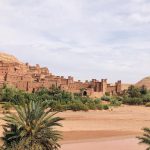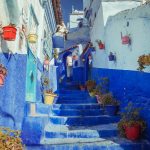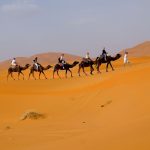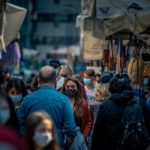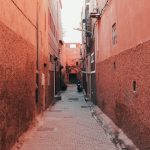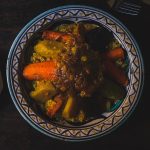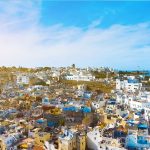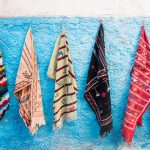Morocco is the land of a thousand contrasts. with its diversity of landscapes, exceptional cuisine, and breathtaking nature, coupled with an extraordinary cultural and human heritage, Morocco is enticing.
In Morocco, nature has given free rein to its imagination. From The Atlas to the Rif Mountains, from The Atlantic coast to the Mediterranean shores, from the wide sandy bays to small isolated rocky coves, from the southern large golden dunes to green oasis, the charm is boundless. A natural enclave, Morocco offers sports and adventures lovers all types of sporting activities including mountains biking, rafting in the upper rivers, paragliding, and hiking in beautiful deserts is a country that attracts people from all over the world and this all year round thanks to its exotic landscapes and gorgeous traditional cities. It’s a country that will charm your hearts with its waterfalls, port cities, and huge sand dunes.
In Morocco, culture is always on the agenda. Throughout the year, music festivals, artistic gatherings, folk moussems glorify art in every region of the Kingdom. Let your Self be taken by the exalted atmosphere and enjoy an enchanting lyrical program.
Geography :
Advantageously, Morocco lies across the Strait of Gibraltar on the Mediterranean and looks out on the Atlantic from the northwest shoulder of Africa. Algeria is to the east and Mauritania to the south. On the Atlantic coast, there is a fertile plain. The Mediterranean coast is mountainous. The Atlas Mountains, running northeastward from the south to the Algerian frontier, average 11,000 ft (3,353 m) in elevation.
Name :
Morocco’s name in Arabic is El Maghreb which means the “kingdom of the west” because Morocco is the westernmost Arabic country. El Maghreb in Arabic also means “sunset.”
Brief History of Morocco :
Morocco has been the home of the Berbers since the second millennium B.C. In A.D. 46, Morocco was annexed by Rome as part of the province of Mauritania until the Vandals overran this portion of the declining empire in the 5th century. The Arabs invaded circa 685, bringing Islam. The Berbers joined them in invading Spain in 711, but then they revolted against the Arabs, resenting their secondary status. In 1086, Berbers took control of large areas of Moorish Spain until they were expelled in the 13th century.
The land was rarely unified and was usually ruled by small tribal states. Conflicts between Berbers and Arabs were chronic. Portugal and Spain began invading Morocco, which helped to unify the land in defense. In 1666, Morocco came under the control of the Alawite dynasty. It is a sheriff dynasty—descended from the prophet Muhammad—and rules Morocco to this day.
Currency :
The official currency of the Kingdom of Morocco is the dirham (MAD) You may see it referred to as “DH” when written in English, The dirham is officially designated as a closed currency, which means that it can only be legally traded within Morocco.
One other important fact here is that since Moroccan dirham is a closed currency, you can’t re-exchange it once you return home. So it’s a use it or loses it kind of thing.
Exchange Currency in Morocco
You can easily exchange currency in Morocco, for example, UK Pounds to Dirham, Euros to Dirham, US Dollars to MAD. This can be done in banks and exchange bureaus. Bear in mind that all international airports in Morocco have a currency exchange counter. Exchange rates are fixed by law and charging high commissions is forbidden, which means that there are very small differences in fees between banks and exchange counters.
If you exchange money, remember to keep all receipts because that shows that you exchanged them legally. Canadian Dollars, Australian Dollars, and New Zealand dollars are rarely accepted, so don’t bring those. There is also a black market where some might approach you in the street to offer currency exchange. Just say no to this because there is no reason for it, and you’re likely getting scammed if accepting their offer.
With that said, it’s better to take out cash from a local ATM and avoid expensive currency exchange fees.
List of Moroccan banks :
You can exchange Moroccan Currency in the following banks, or use their ATMs.
· Attijariwafa Bank
· Banque Populaire du Maroc
· Société Générale Maroc
· BMCE Bank
· BMCI
ATMs in Morocco :
Moroccan ATMs are usually available 24/7 and they can be found in all major cities and smaller towns. Your Open Doors Morocco Local Host will get you to an ATM as often as needed throughout your tour.
The ATMs in Morocco accepts all major international debit- and credit cards. It’s easy to use the Moroccan ATMs and when you insert a foreign card, the info will be displayed automatically in English. Always choose to be charged in the local currency without conversion.
Almost all ATMs in Morocco accept Visa, MasterCard, Electron, Cirrus, Maestro, and InterBank cards.
Always use an ATM machine that is attached to a bank. That way on the rare event that the machine sucks your card in, you can go into the bank to retrieve it by showing your passport. If a free-standing machine were to suck your card in, who knows how long it would take for you to get it back.
Official Language :
The official language is Modern Standard Arabic and its distinctive dialect is Moroccan Arabic « Darija » 60% speak Berber either as a first language or with Arabic. French is the unofficial second language and is universally taught, it is the commercial language and is used in education and government. In the north, 2 million speak Spanish. English is not widely spoken but is becoming a second language of the educated youth.
Berber the oldest known native Moroccan language and has an unknown number of speakers. There are three main varieties, Tamazight Tarifit, Tamazight of the Atlas, and Tamazight Tashelhit. In addition to rural areas, there are sizeable Berber speaking populations in urban areas.
Moroccan cuisine :
Although it is situated in a desert region, it has one of the most exotic and tasty cuisines in the world, Morocco is a crossroad between Africa, Europe and the Middle East which gives the Moroccan food a real sense of variety and richness, Nearly everything used in the Moroccan cuisine is locally grown.
If you have a taste for good things, you will enjoy the authentic, typical and memorable cuisine. Moroccan cuisine is celebrated throughout the world. It is in the image of the country: generous, dense, colorful, fragrant, and abundant. Rich and diverse, it also takes the colors and flavors of each region. Moroccan cuisine reflects the country’s complex history and the different people who settled there. So what are you waiting to Discover its great classics and its many variants!
Warm hospitality :
Morocco is the third welcoming country in the world according to the World Economic Forum investigation measuring the quality of being warm and welcoming to strangers. The country is known for being one of the most tolerant of the Arab nations. The country is relatively safe, peaceful, and stable. Moroccan people, both Arabic and Berber, are also noted for their warm hospitality and warm, friendly nature.
Handmade treasures :
Strong with an artisan origin, Morocco has cumulated over history typical business activities and knowhow immortalized from father to son. Each region is distinguished by its craftsmanship and its field of competence. The traditional souks of the medinas exhibit admirable ingenuity and traditional works shaped by talented hands.
Tapestry is a major art in the Kingdom and a Female-dominated crafts involving infinite subtlety in the making. As proof the reputation of the traditional carpet of Rabat equal to that of oriental carpets. Pottery handicraft is second after tapestry and considered among the oldest specialties in Morocco, especially in the areas of Rabat-Salé, Fez and Asfi. A subtle art that gives us wonders such as colored tagine dishes, miniature, decoratives vases, lamps.

